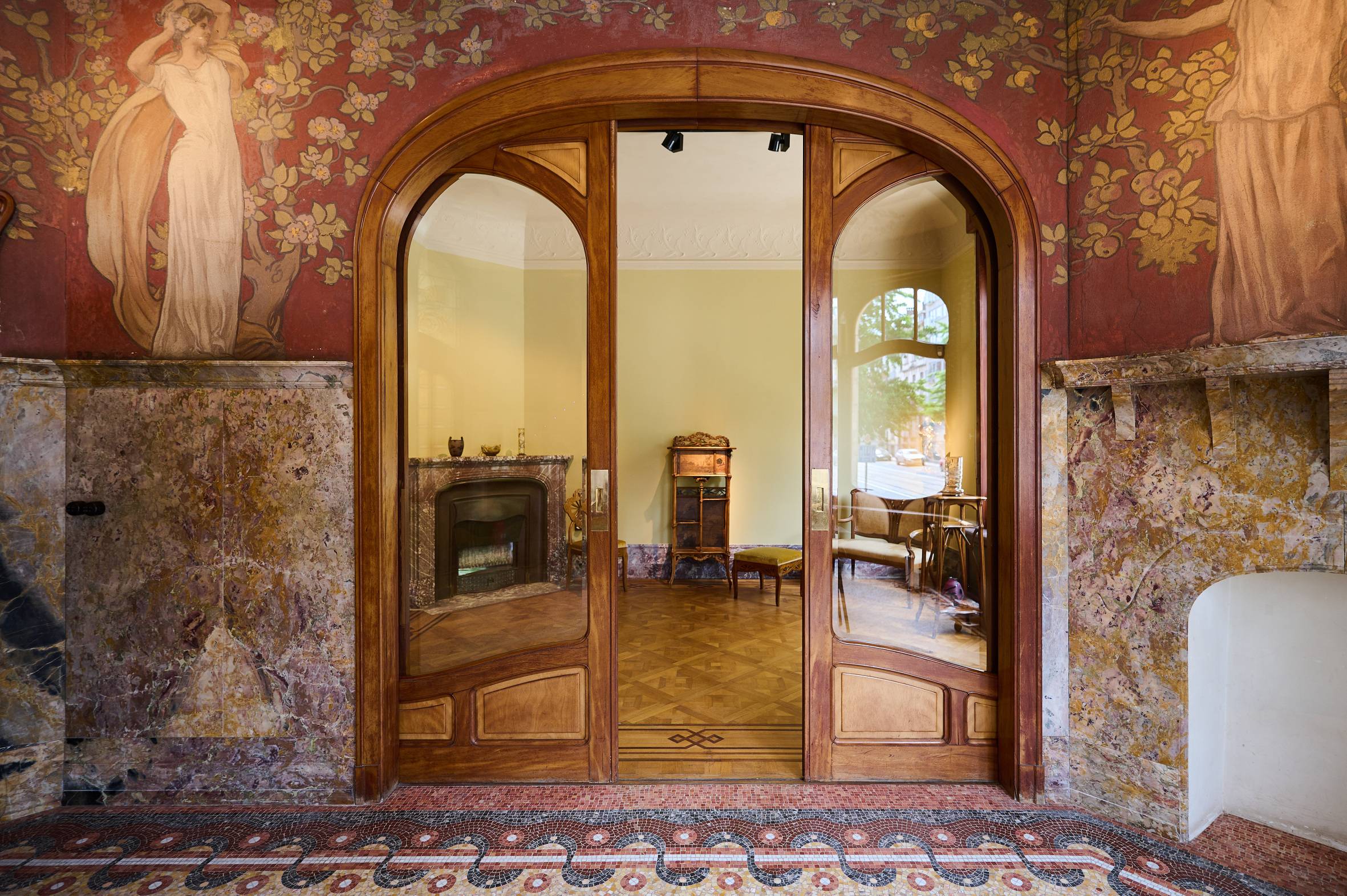As part of the 2023 celebration the Maison Hannon located at the junction of Avenue Brugmann and Avenue Jonction (SaintGilles) opened its doors as a “house-museum”.
Built on the corner of avenues Brugmann and Jonction in Saint-Gilles, by architect Jules Brunfaut (1852-1942), at the request of the Hannon couple, Marie and Édouard, in 1902. This new Art Nouveau architectural and exhibition centre along with the Horta Museum will strengthen the cultural and tourist offer of this district in the upper part of Brussels.
Conceived as a dreamlike, symbolist, enclosed universe, the Maison Hannon is the synthesis of Marie’s mature taste for botany and literature, and Edouard Hannon’s taste for poetry, antiquity and photography. The 1900 Paris Exhibition was a turning point for the couple, who met French Art Nouveau master Émile Gallé. They asked their friend Jules Brunfaut to draw inspiration from the houses of Victor Horta (personal house, Tassel and Winssinger hotels), and Octave Van Rysselbeghe and Henry Van de Velde (Otlet hotel) to create a singular work. Jules Brunfaut, unfamiliar with the new style, achieved a master coup by combining Beaux-Arts and modern styles.
A ‘portrait house’
The greenhouse, built entirely of metal, literally spills out onto the street and sets the house apart. Situated on the corner of two avenues Gallé placed a bas-relief by sculptor Victor Rousseau (1865-1954), an allegory of time suspended at sunset, the Golden Hour. This work is the symbolist key to understanding the philosophy of the interior, furnished entirely by Émile Gallé (chandeliers and furniture), and decorated with contemporary works by James Ensor, Victor Rousseau and Émile Claus.
Vast frescoes by Paul Baudouin (1844-1931), a disciple of Puvis de Chavannes, the works unfold like tapestries in the stairwell and reception room. Allegories are depicted in an antique décor with marbles and mosaics. The house reflects the Belgian and French tastes of the owners. In this sense, we can speak of a portrait house.
Édouard Hannon (1853-1931) was an engineer hired at the age of twenty-three by the Solvay group and sent to Dombasle, a suburb of Nancy (Lorraine, France), to work in the first plant built abroad. One of the group’s most efficient executives, he was recalled to the head office in Ixelles, where he reformed the group’s worldwide production, giving him the opportunity to travel in Europe, Russia and the United States. In 1907, he was appointed top executive, the only non-family member to hold this position. Marie Debard (1857-1926) was French, born in Dombasle. Little is known about her, but the house was mainly furnished by her.
Édouard Hannon was a pioneer of pictorialism in Belgium, and helped to found the Association of Belgian Photographers, which worked to elevate the medium to an art form. In 1894, he won the bronze medal at the first Paris-Club exhibition in Paris, becoming the leading Belgian figure in the movement. He photographed his travels around the world. Social realism, ancient architecture, industry and landscapes punctuate an extremely rich body of his photographic work.
The ending of this story could have been very different…
When the Hannon couple’s daughter died in 1965, the family decided to resell the property, which became the victim of theft, damage and ransacking.
In 1972, Marie Van Mulders-Brunfaut raised the alarm with the Royal Commission for Monuments and Sites, and the facades and roof were listed in 1976 to prevent the construction of an apartment block. In the meantime, Art Nouveau had become an object of attention. In 1979, the Commune of Saint Gilles acquired the property, with the aim of preserving the building at a time when its dilapidated state was the subject of much press coverage. In 1983, the interior was listed. The aim became to preserve what there was to preserve. In 2019, on the initiative of the Commune and the Brussels Region, the non-profit organization Maison Hannon was created to open the building as a museum to continue the restoration and development of the site as a museum.
Just in time for this year’s celebration of the art nouveau movement in Belgium, the much anticipated restoration and opening marks another important moment in the protection of Brussels cultural heritage.













